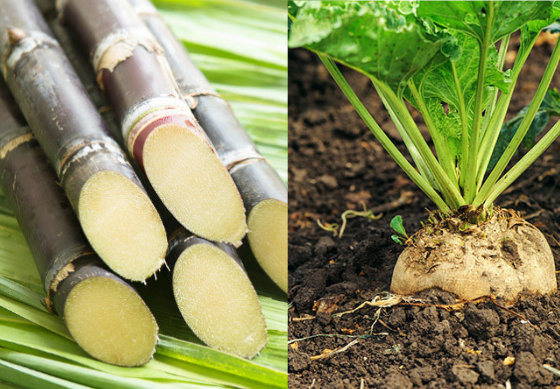The sourcing of beet sugar vs cane sugar affects farming impact in the sugar industry.
The sourcing of beet sugar vs cane sugar affects farming impact in the sugar industry.
Blog Article
Discover the Uses and Advantages of Beet Sugar Vs Cane Sugar in Your Daily Diet Regimen
Discovering the distinctive top qualities of beet and cane sugar reveals more than simply their sweetening abilities; it highlights their unique effect on health and wellness and cookeries. Beet sugar, recognized for its subtle taste, is frequently preferred in delicate treats, whereas cane sugar, with its hint of molasses, includes splendor to durable dishes. Each type holds its own dietary profile and glycemic effects, inviting a deeper understanding of their functions in a balanced diet plan and sustainable usage practices.
Origin and Manufacturing Procedures of Beet and Cane Sugar

The distinct climates and soil kinds required for growing sugar beets and sugarcane contribute to differences in their growing techniques and geographical circulation, affecting the business economics and sustainability of their production. beet sugar vs cane sugar.
Nutritional Comparison In Between Beet Sugar and Cane Sugar
In spite of stemming from different plants, beet sugar and cane sugar are nutritionally extremely similar, both mainly including sucrose. Each gives concerning 4 calories per gram, equating to roughly 16 calories per tsp. Structurally, both sugars are composed of around 99.95% sucrose, with minimal quantities of other materials like moisture and trace element, which do not substantially alter their nutritional accounts.

Ultimately, when choosing in between beet sugar and cane sugar based upon nutritional web content alone, both deal identical benefits and disadvantages as they are basically types of the very same molecule-- sucrose, giving fast power without various other nutrients.
Effect On Health: Glycemic Index and Caloric Content
Discovering better right into the results of beet sugar and cane sugar on health and wellness, it is very important to consider their glycemic index and calorie content. Both sugars are classified as sucrose, which includes glucose more information and fructose. This structure leads them to have a similar impact on blood glucose degrees. The glycemic index (GI) of both beet and cane sugar is around 65, classifying them as high-GI foods, which can trigger fast spikes in blood sugar degrees. This is an important facet for individuals handling diabetes mellitus or those trying to maintain their energy levels throughout the day.
Each kind of sugar has around 4 calories per gram, making their caloric content matching. For those keeping track of caloric intake, particularly when handling weight or metabolic health problems, understanding this equivalence is important (beet sugar vs cane sugar). Nevertheless, extreme consumption of any kind of high-calorie, high-GI food can add to health issues such as weight problems, heart problem, and insulin resistance.
Environmental and Economic Factors To Consider of Sugar Manufacturing
Beyond health and wellness impacts, the production of beet and cane sugar additionally elevates substantial environmental and financial concerns. Sugar beet cultivation tends to call for cooler environments and has a lower geographical footprint contrasted to sugar cane, which flourishes in exotic regions. However, both plants are extensive in terms of water use and land line of work, look at this now possibly resulting in logging and water shortage. Economically, the global sugar market is very volatile, influenced by adjustments in global profession plans and aids. Lots of countries incentivize sugar production through financial backing, skewing market value and influencing small farmers adversely.
Additionally, using pesticides and fertilizers in both beet and cane sugar farming can result in dirt deterioration and pollution, further impacting biodiversity and local water bodies (beet sugar vs cane sugar). The choice between cultivating sugar beet or cane often rests on regional environmental conditions and economic factors, making the sustainability of sugar manufacturing an intricate problem
Culinary Applications and Flavor Distinctions
While the ecological and economic elements of sugar production are without a doubt substantial, the choice between beet and cane sugar also affects culinary applications and flavor profiles. Beet sugar, acquired from the sugar beet plant, is recognized for its incredibly neutral taste.
Cane sugar, drawn out from sugarcane, often preserves molasses traces, which give a distinctive richness and deepness. The minor variation in dampness web content between beet and cane check out here sugar can affect the appearance and consistency of dishes, making cane sugar a preferred selection for certain dishes that profit from its special buildings.

Final Thought
Finally, both beet and cane sugar have distinct origins and manufacturing processes, supplying comparable dietary accounts with mild distinctions in salt web content and flavor. While their impact on health and wellness, specifically pertaining to glycemic index and calories, is equivalent, the option in between them typically boils down to ecological, financial variables, and details culinary needs. Understanding these aspects can direct customers in making informed choices that straighten with their wellness objectives and taste choices.
Report this page